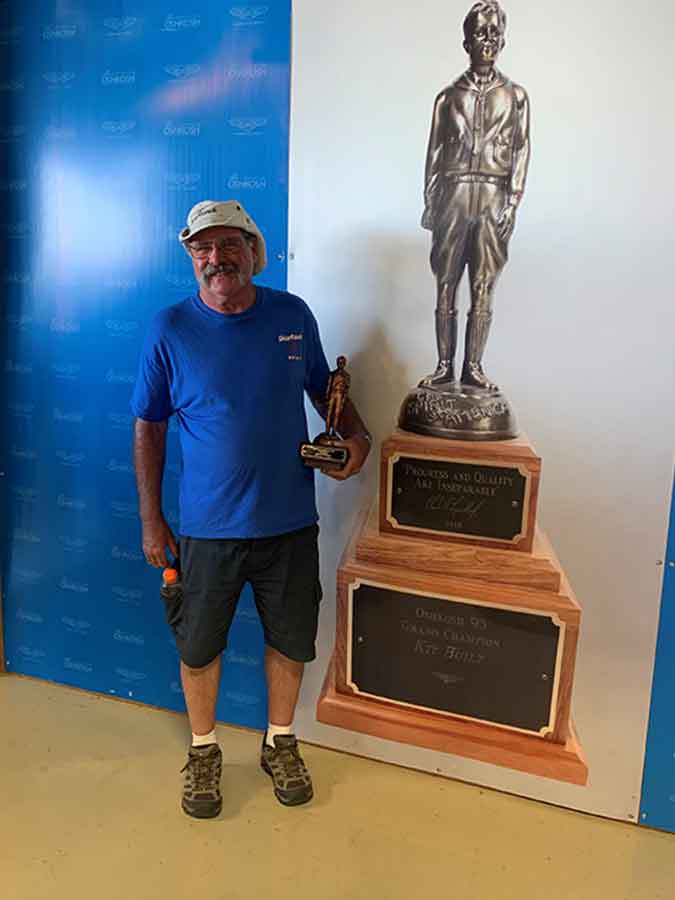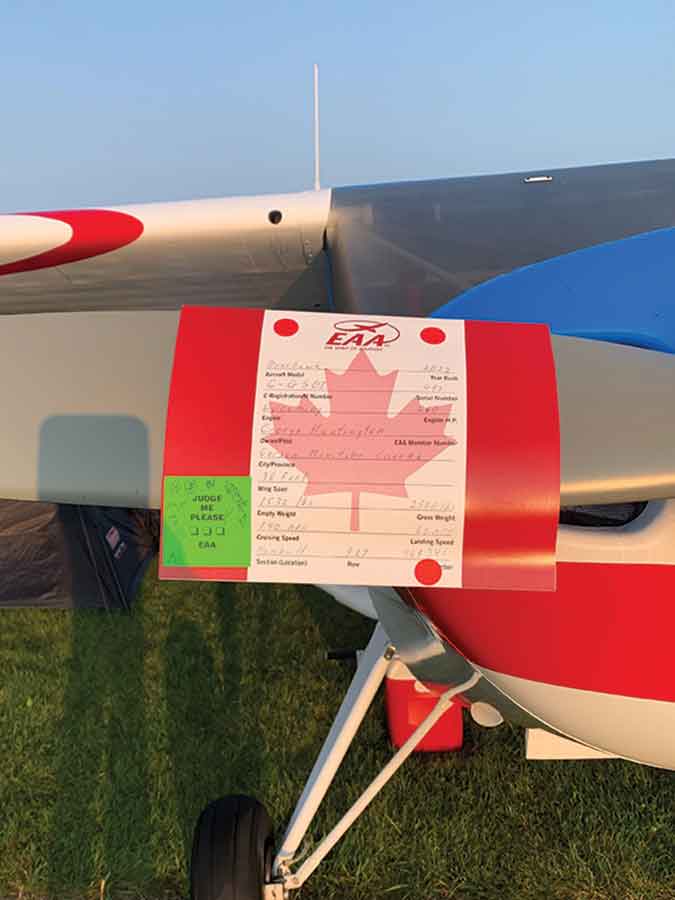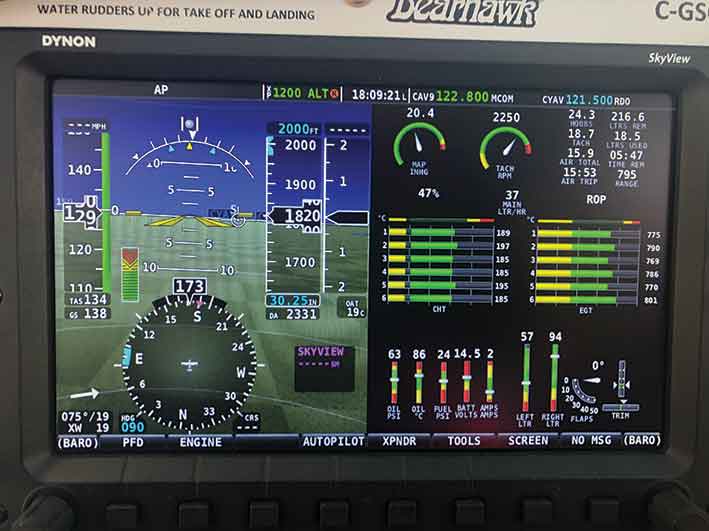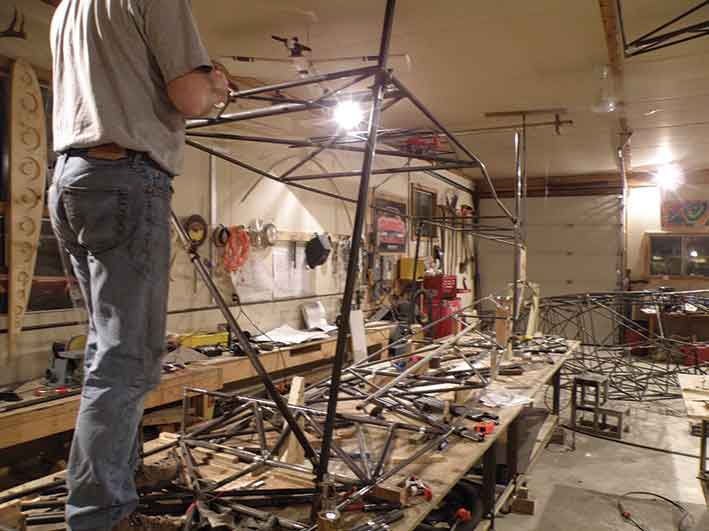A former Stonewall resident with plane-building knowhow brought home an aviation award after his aircraft caught the eye of judges at the Experimental Aircraft Association’s fly-in show in July in Oshkosh, Wis.
George Huntington, who is a retired aircraft maintenance engineer, built his plane from scratch using raw materials such as aluminum sheet metal for the wings and steel tubing for the fuselage.
With his engineering background, Huntington built a Bearhawk model 4-place plane that’s called a taildragger because it has a third wheel on the tail. The plane can carry four people, has a Lycoming engine with 260 horsepower, a wingspan of 36 feet, an empty weight of 1,532 pounds, a gross weight of 2,500 pounds, a cruising speed of about 135 miles per hour on 50 per cent power, about 145 miles per hour at normal cruise speed (but burning more fuel), and a landing speed of 60 miles per hour. It has about an 800-mile range on 50 per cent power.
“When I was a little kid, I always wanted to build an airplane,” said Huntington, who now lives in Garson, west of Beausejour. “So, finally, years later I’ve completed it.”
Huntington said he and his friends started building the plane in June 2005 when he was living in Stonewall. Because of job commitments, which included moving to Minnesota in the U.S., he completed the plane 17 years later. He also used to carry out structural repairs of glider aircraft for the military’s Gimli Air Cadets program.
Scratch-building your own aircraft takes time and commitment, according to a Bearhawk forum where builders can get advice from others. It can typically take seven to 10 years to build a plane to your own specifications. Some people may be able to complete the job faster depending on how much free time they have or how many extra hands they have to help out.
“The federal government labels these aircraft amateur built and they’ll come out and look at your plane before you close everything up and then again when it’s ready to fly,” said Huntington, “They want to make sure things are done according to the standards.”
With a private pilot’s licence he earned in 1977, Huntington flies his plane across the Interlake and beyond.
In July he flew the plane to Oshkosh, Wis., for the EAA’s AirVenture fly-in conference, which featured air shows, plane rides, different types of aircraft ranging from antique to contemporary, events for children and awards. It drew about 650,000 people.
Huntington said he registered the plane and put a sign on its propeller, inviting EAA judges to consider it for an award. One of the awards is called the Lindy, named after American aviator Charles Lindbergh. Lindbergh was the first person to fly alone across the Atlantic in 1927 in a plane called the Spirit of St. Louis.
Lindy Awards are given out in six categories: homebuilts, warbirds, vintage, rotorcraft, ultralights and seaplanes. EAA judges look for the quality of craftsmanship, functionality and appearance of the aircraft, among other factors.
Huntington was handed a bronze Lindy trophy and bragging rights in the homebuilt category after 14 judges signed off on his Bearhawk.
Planes are what brings together the EAA’s aviation enthusiasts from aircraft-related industries such as commercial and recreational flying, building, and restoration and maintenance. The EAA is a non-profit organization that was founded in 1953 in Milwaukee, Wis., by a group of people interested in building their own planes, according to its website.
The organization brings together people with interests in antique aircraft (built before Sept. 1, 1945), classics (after Sept. 1, 1945 to 1955), warbirds, aerobatic aircraft, ultralights (defined in the U.S. as a one-seater with a maximum empty weight of 254 pounds powered and 155 pounds unpowered), helicopters and contemporary aircraft (1956-1970). EAA supports and promotes aviation through its AirVenture events and offers the public opportunities to experience flight. For instance, the EAA took its Second World War B-17 bomber called the Aluminum Overcast – it almost saw action in the war – on tour, with a stop in Gimli in 2016.
Huntington’s winning aircraft is just one of four that he and three other people constructed. Two of the planes are flying and one is almost ready to fly.
“We started out with four people but one guy dropped out and we wound up with an extra airplane. We had already started it, and there was no sense in having a half-finished airplane and all the raw materials, so we just kept building the extra one,” he said.
Huntington’s plane is based at the Oak Hammock Air Park off Highway 67. He flies in all four seasons and can put floats or skis on the plane so that he can land on lakes. He also takes his family on air trips or to fly-ins – the equivalent of car shows – where people can show off their “hot” planes, mingle with other aviation enthusiasts and enjoy a day out.
“Last weekend I picked up my grandkids, Colton and Evy, at a landing strip just east of Teulon and flew them to our landing strip at Seven Sisters,” he said. “On Saturday I flew them into Oak Hammock to attend the fly-in.”
For more information about the Experimental Aircraft Association, visit www.eaa.org
Express Photos Courtesy of George Huntington




